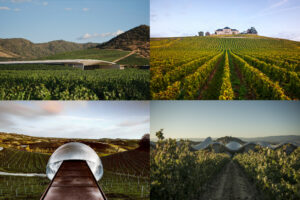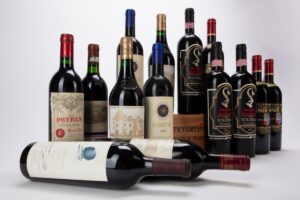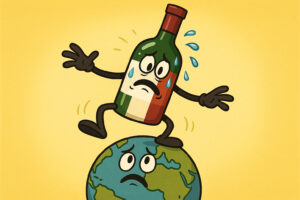Not even the recent price hikes, which reached spikes of 30-35%, have dented the Italian’s passion for pasta. After only a momentary decrease in consumption registered in 2007 of what is often considered the country’s national dish has, it has continued only to increase: by between 2 and 2.5% throughout 2008. This was the data recently revealed by Cia, the Italian Farmer’s Confederation, based on the latest information collected by Ismea-AcNielsen.
It appears that not even the consistent increase in prices can come between the Italian’s passion for pasta. According to Cia, Italians continue to be the top consumers of pasta in the world: over 28 kilos per person per year, with 37% being eaten in northern Italy, 23% eaten in the center, and 40% in the south. Following at a distant second is Venezuela (13 kilos per person), then Tunisia (11.8 kilos), Greece (10.3 kilos), Switzerland (9.5 kilos), and Sweden and the United States (9 kilos per person per year). Therefore, the pasta consumption of the average Italian is 3 times higher than that of a Greek or an American, 5 times superior to that of a German or Spanish person, and 16 times higher than that of a Japanese person.
And, in the meantime, the economic value of pasta continues to grow. In 2008, according to the primary estimates, Italian production should reach 3.4 tons (for overall earnings of about 4 billion euros). The U.S. follows with 2 million tons, and Brazil with 1.5 million tons. Italy, according to what has also been revealed by Unipi, the Italian pasta maker’s industrial union, covers 26% of global pasta production and 74.7% of that in Europe. This means that 1 out of every 4 plates of pasta eaten worldwide, and 3 out of 4 in Europe are produced in Italy.
The Italian national consumption of pasta, noted Cia, is equal to a little more than 1.5 million tons, for a total value of 2.5 billion euros. But the true boom is in exports. In fact, the demand for Italian pasta continues to increase. The latest data shows export values reaching about 1.5 billion euros.
Germany has beat out the U.S. as top importers with 16.2% versus 14.9%. France claims 12.9%, Great Britain 11%, while Japan increases to 5.5%, and Russia decreases to 4.1%.
As for the Italian national division of the different types of pasta, semola pasta is by far the most popular, making up 82% of total consumption, fresh pasta follows at 5%, then dried egg pasta at 5%, fresh pre-packaged pasta 3%, gnocchi 3%, whole wheat pasta 1%, and filled dried pasta 1%.
All of this data confirms that pasta remains number one in the culinary hearts of Italians because, regardless of vertiginous price hikes for pasta registered over the past 2 years, it still remains an economically accessible dish to prepare for families. One kilo of pasta, which can be consumed by up to 10 people, costs less than two espressos at a café. And pasta, one of the “principle products” of the Mediterranean diet, also has many other advantages. It is an extremely versatile food that can be eaten as a main dish, first course, or as an entire meal, depending on the condiments used. As well, it is not a high calorie food and causes no risks for heart disease.
It should, however, be noted that there is still a strong asymmetry between the sharp reduction in primary agricultural materials and the end cost for consumers. The schism between the two costs continued to increase in 2008.
In fact, compared to a progressive reduction in grain prices during the second half of the year, the prices for pasta continued to increase. According to Cia there is hope that this will soon result in reductions for consumers (of up to 50% in respect to the first months of 2008) and that further increases will become a thing of the past.
Copyright © 2000/2025
Contatti: info@winenews.it
Seguici anche su Twitter: @WineNewsIt
Seguici anche su Facebook: @winenewsit
Questo articolo è tratto dall'archivio di WineNews - Tutti i diritti riservati - Copyright © 2000/2025








































































































































































































